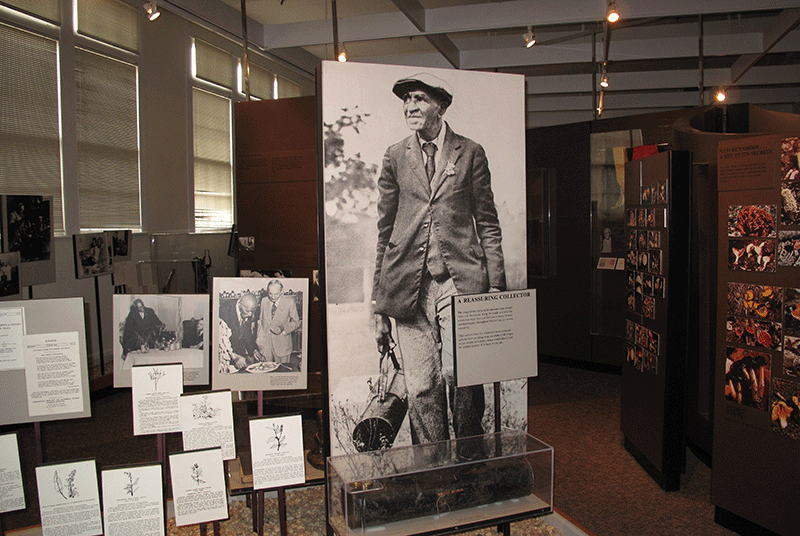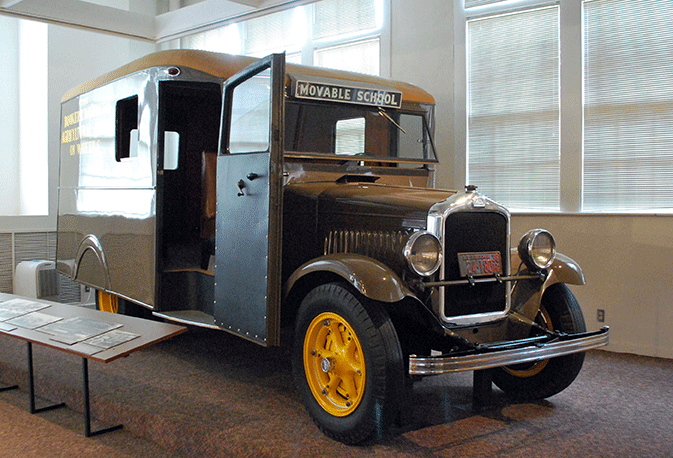
By Marilyn Jones
It’s whisper quiet in the museum as I pull open large windowed doors to what used to be the campus laundry. The century-old brick building served Tuskegee Institute students and faculty in a utilitarian way for decades until, in 1941, it was turned into a museum to honor George Washington Carver; a memorial to what can be accomplished with intellect, imagination and integrity.
The museum was closed for several months while undergoing renovation by the National Parks Service and reopened this spring. It now features new exhibits, an accessible information desk, a new elevator and an expanded bookstore.
Although Dr. Carver was born in Diamond, Missouri, he arrived in Tuskegee as a young man in his mid-30s and lived in this college community until his passing at the age of 78 in 1943. He brought international prestige to Alabama and Tuskegee Institute (now known as Tuskegee University).
Booker T. Washington, principal of the institute, recruited the very best to teach at the school. Dr. Carver’s arrival in 1896 marked the beginning of decades of work that would help agriculture and form the basis of how Americans farm today.
Before Tuskegee

in the early 20th century. Photo by Marilyn Jones
Dr. Carver was born circa 1864. There are conflicting stories as to how young George and his brother James came to be raised by their former owners Moses and Susan Carver, but the childless couple took the boys in and raised them as their own after the Civil War.
Unable to attend school because of their color, Mrs. Carver taught both boys how to read and write. Later young George moved throughout the Midwest seeking more education, finally enrolling at Simpson College in Indianola, Iowa, in 1890. There he majored in art, but a teacher convinced him to transfer to Iowa State College to study agriculture. By the time he completed a master’s degree in agriculture in 1896 — the year he accepted an offer to head the agricultural department at Tuskegee Institute — Dr. Carver had impressed the faculty as an extremely talented student in horticulture and mycology (the study of fungi).
Exhibits Tell the Story
The museum addresses many chapters of Dr. Carver’s life and celebrates his achievements.
His research included methods of crop rotation and the development of alternative cash crops including peanuts, soy beans, sweet potatoes and pecans for farmers in areas heavily planted with cotton. This helped struggling sharecroppers, many of them former slaves, faced with harsh conditions including the devastating boll weevil. The development of new crops and diversification of crop use helped stabilize their livelihoods.
One of Dr. Carver’s innovations was the Jesup Wagon, a mobile classroom designed to bring his lessons to farmers. It was named after New York financier and Tuskegee donor Morris Ketchum Jesup. Carver also published bulletins and gave demonstrations on diverse subjects, including native clays for paints and increasing soil fertility without commercial fertilizers.
The scientist and teacher developed more than 300 uses for the peanut, more than 100 for the sweet potato and many others for the soy bean. The hundreds of products he invented included plastics, paints and dyes. Peanuts especially appealed to him as an inexpensive source of protein that did not deplete the soil as much as cotton did.
In 1920, Dr. Carver’s work with peanuts drew the attention of the Peanut Growers Association, attesting to the wide potential of peanuts. The following year, he testified before Congress in support of a tariff on imported peanuts. With the help of Dr. Carver’s testimony, the tariff was instituted in 1922.
On display are a Jesup wagon and a later motorized version; items from his laboratory; photographs and honors; and his artwork. The museum helps tell the story of Dr. Carver’s life and work as well as illustrate the situation farmers found themselves in after the Civil War.
Dr. Carver’s Later Years
By the late 1920s Dr. Carver had stopped teaching, but he continued to advise peanut producers and other farmers. He was one of the most famous African-Americans of his time, and one of the best-known African-American intellectuals. By the time of his Congressional testimony Dr. Carver was known internationally in political and professional circles as well.
President Theodore Roosevelt sought his advice on agricultural matters. In 1916 he was made a member of the British Royal Society of Arts — a rare honor for an American. Dr. Carver also advised Indian leader Mahatma Gandhi on matters of agriculture and nutrition.
Dr. Carver used his celebrity to promote scientific causes and wrote a syndicated newspaper column while touring the nation speaking on the importance of agricultural innovation, the achievements and example of Tuskegee, and the possibilities for racial harmony in the United States.
Dr. Carver never married. He died on January 5, 1943 after falling down the stairs at his home and left his entire life savings to the museum and the George Washington Carver Foundation. He is buried next to Booker T. Washington on the Tuskegee University grounds.
His epitaph reads simply: “He could have added fortune to fame, but caring for neither, he found happiness and honor in being helpful to the world.”
If you go:
The museum is part of Tuskegee Institute National Historic Site. There is no admission charge. For more information, check the website www.nps.gov/tuin/index.htm.




